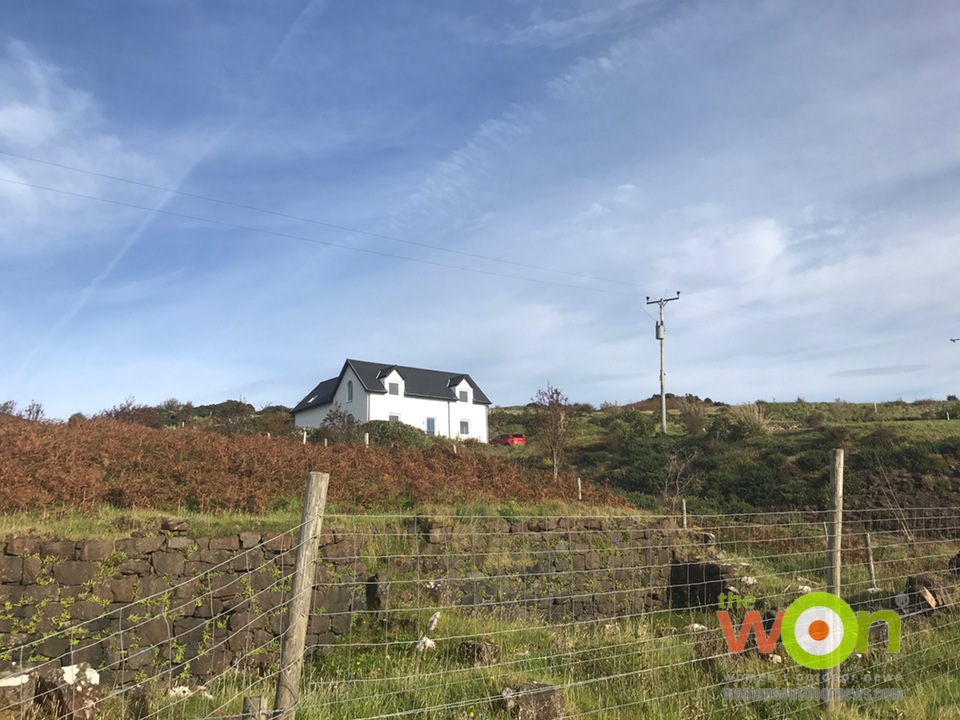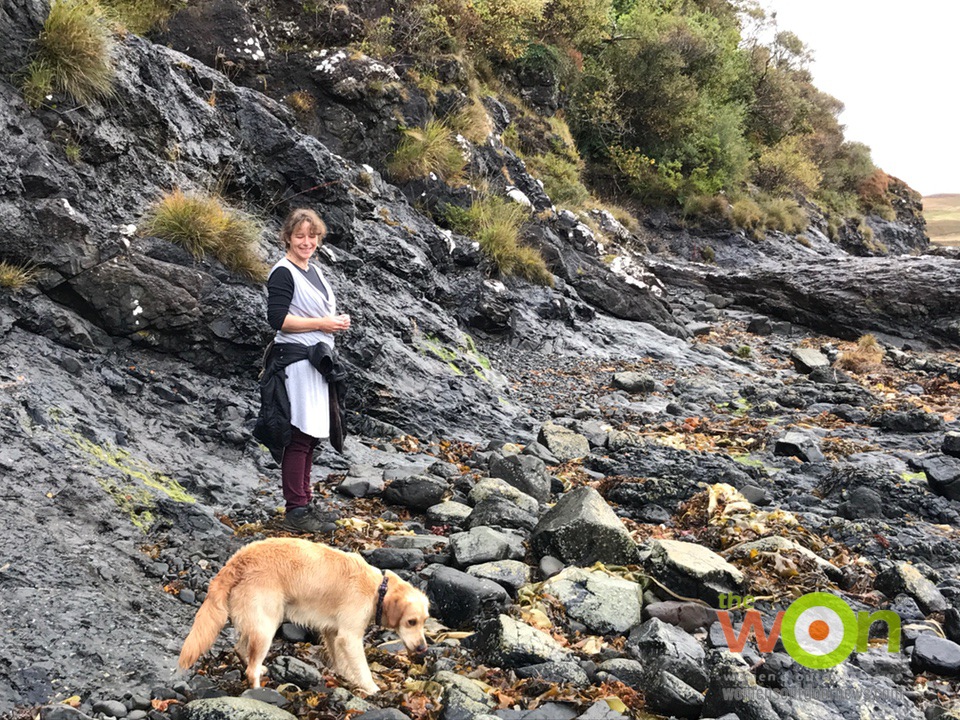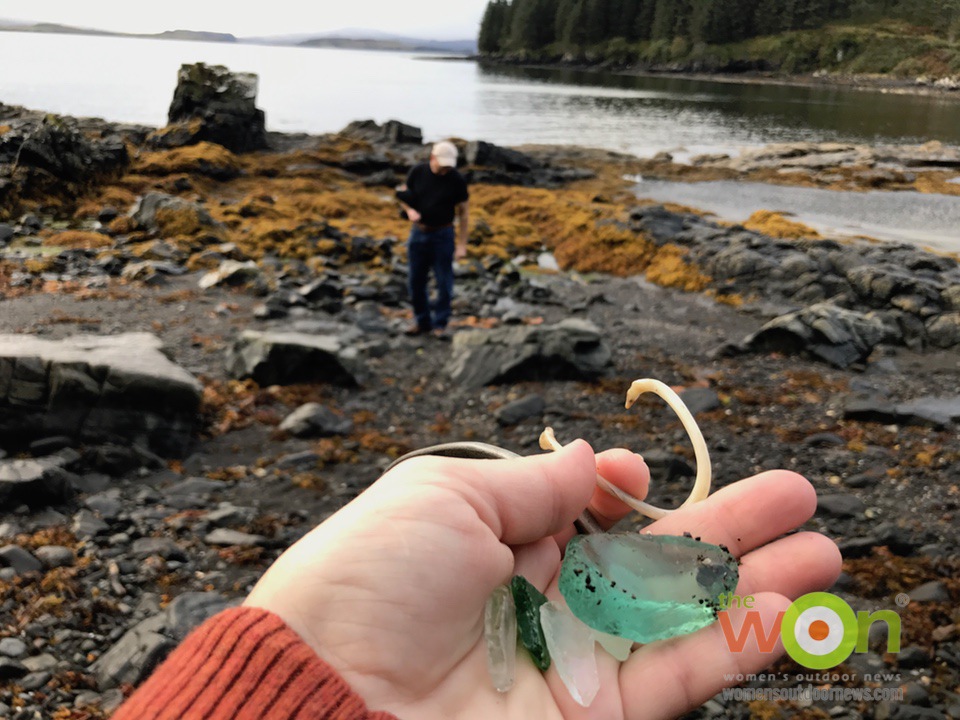Last September, my husband and I spent 2 weeks in the UK, starting our trip in Glasgow, Scotland, renting a car and driving to the Isle of Skye. That’s about 5 hours and 2 flat tires (aka, punctures) away. Fortunately, there’s a bridge that you can drive across to get to this famous island — which once hid Bonnie Prince Charlie from those who wished him not to be the future king. It’s said that there might be people on this island who have never seen a train, as there are no trains here. These same people, though, may have seen fairies, and most definitely have had an opportunity, such as I did, to collect sea glass. Fairies will be the next story.

We stayed at a lovely cottage called Beacarrie House, tended by a kind landlady named Rosie Morrison, who also happens to be a sea glass artist. The one-bedroom, warm and homey cottage sits overlooking Loch Bracadale to the Cuillin Ridge, Talisker cliffs and mountains near the village of Orbost.

The view from Beacarrie.
It’s not hard to imagine shipwrecks out there among the jagged rocks and craggy beaches, and stories abound of Vikings, mermaids, fighting clansman and of course, fairies. I loved it.

I also loved the opportunity to spend a morning hunting for sea glass with Rosie and her dog, Susie. Rosie owns Skye Seaglass, a cottage business where she designs beautiful pieces from sea glass and uses intricate weaves of metal to enhance each treasure.
In my research about sea glass, I discovered a difference between sea glass and beach glass. Sea glass comes from saltwater origins and beach glass from freshwater. Sea glass usually shows more of a frosted look, after wave action causes it to be tumbled against rocks, shells, reefs and/or sand. It can take 40 years for a piece of glass to get that “look.”

Can you spot the 1 piece of sea glass in this photo? Hint: It’s white.
Rosie especially likes to find green and blue glass. Sea glass mostly comes from bottles, but also might be from old windows, pottery, plates, china, jars, you name it. Rosie said she finds a lot of brown and white glass in her cove. This trend bore true. And then, wowzahs, I spotted and picked up a chunk of lovely green glass. According to Wikipedia, “Uncommon colors of sea glass include a type of green, which comes primarily from early to mid-1900s Coca-Cola, Dr Pepper, and RC Cola bottles as well as beer bottles. Soft green colors could come from bottles that were used for ink, fruit, and baking soda. These colors are found once in every 50 to 100 pieces.”

Rosie agreed to make a funky, chunky necklace for me from the pieces we found on the beach that day. But, hey, we found so many that she decided to make 2 necklaces! She wrote, “I have made 2 necklaces out of the sea glass you picked up (photos below). Originally, I wanted to combine the 2 elements but it just worked out better as 2 pieces.” I am over-the-moon delighted to have these 2 pieces to wear and share.
I can hardly wait to get my necklaces. I think they will make a statement and definitely tell a story.

Rosie transformed that lovely piece of green into this creation, complete with the Viking woven net chain, too. Love!

I also purchased several beautiful sets of earrings, and one particular pair featured a Viking net woven pattern around the sea glass.

I heartily recommend a trip to the Isle of Skye, for so many reasons. When you’re there, check out and stay at Beacarrie Cottage.

Publisher/Editor Barbara Baird is a freelance writer in hunting, shooting and outdoor markets. Her bylines are found at several top hunting and shooting publications. She also is a travel writer, and you can follow her at https://www.ozarkian.com. View all posts by Barbara Baird